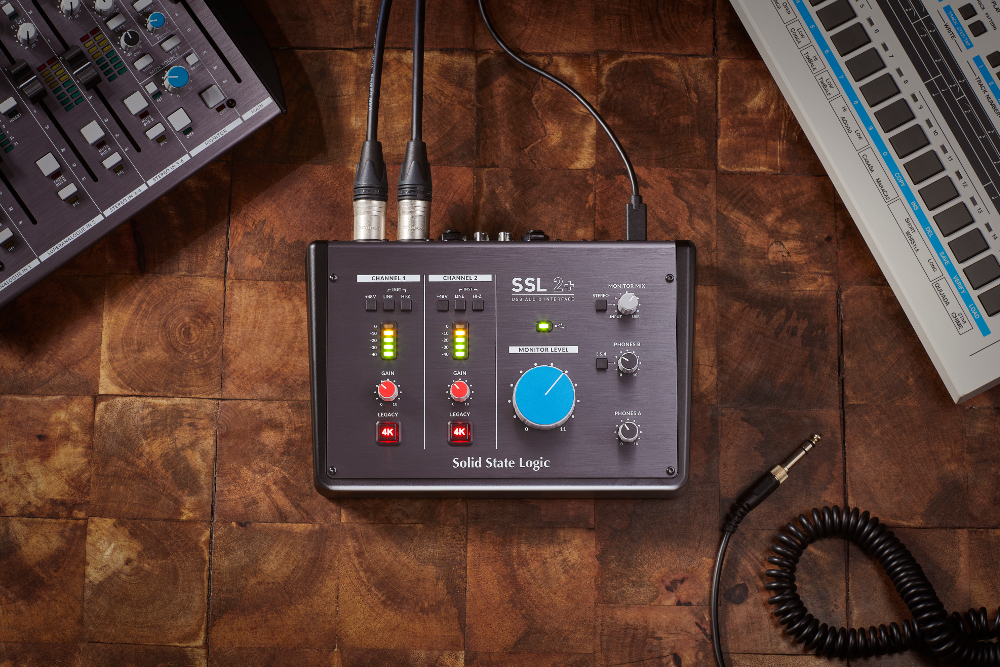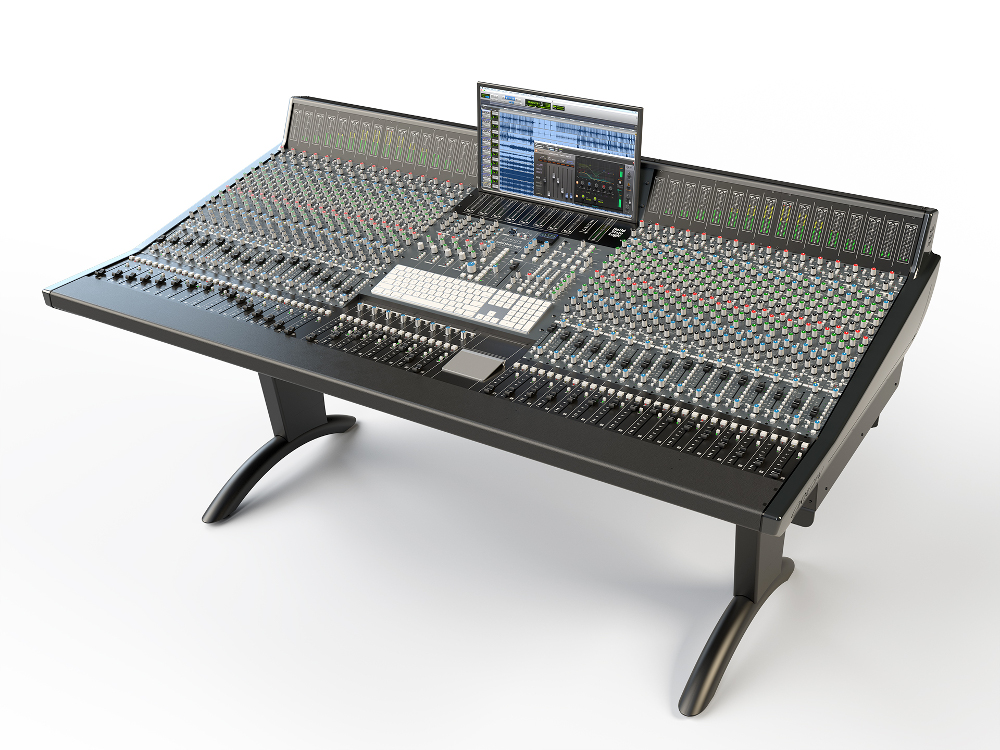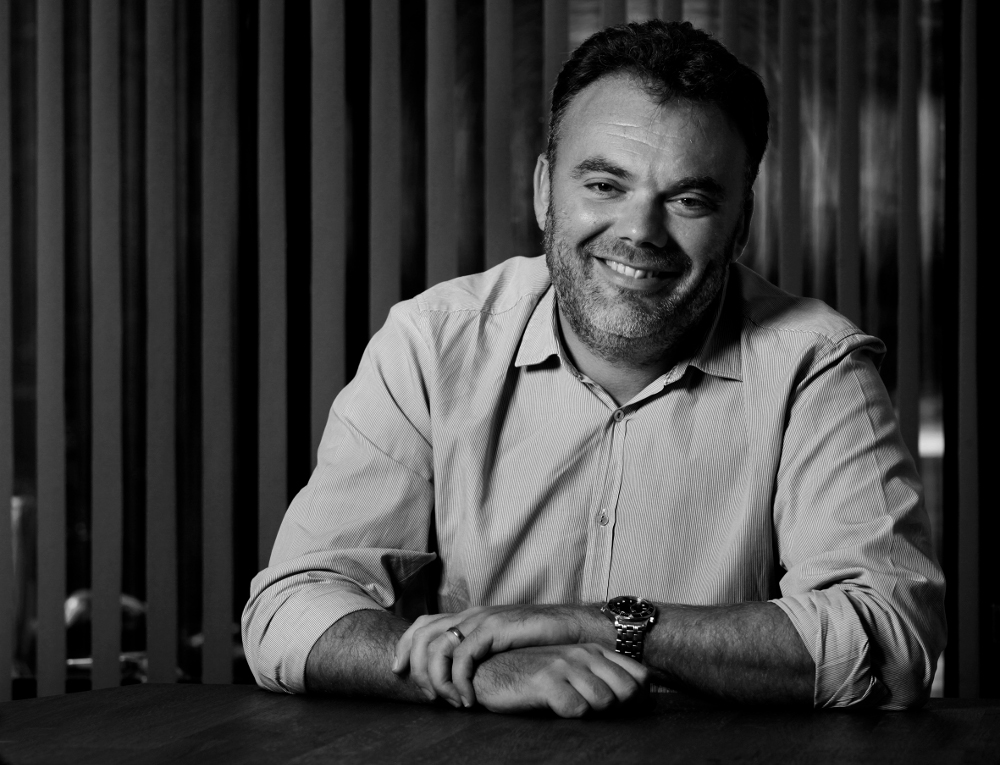Beyond the Console: How SSL is Updating Its Place in Audio
SSL may finally be coming out of its shell.
Of course, the company also known as Solid State Logic has never been a shy presence in the audio world. For decades since its founding in 1969, SSL has stood proudly among a handful of brands—along with an elite inner circle of other manufacturers, developers, and studios—that are synonymous with hit music production. From there, SSL leveraged that status to become a major player in the live and broadcast verticals.
SSL’s studio product line has grown consistently to go far beyond the mainframe consoles that cemented its reputation—coveted boards like the 4000 (4K) G-Series and 9000J, followed later by next-gen entries like the AWS and Duality. Expanded gear offerings have come to include powerful controllers like the Nucleus2, analog processors like Fusion and X-Rack, and a host of plugins.
But there was a final frontier for SSL to cross, and at NAMM 2020 this year the company went there: a line of affordable interfaces designed for the personal studio. Dubbed the SSL 2 and SSL 2+, the new duo are USB-powered and include high-performance mic preamps, a legacy 4K analog enhancement mode, extensive monitoring features, and an SSL Production Pack software bundle.
With the SSL 2 priced at $229.99 and the more collaborative SSL 2+ at $279.99, SSL is entering an intensively competitive fray. Feature-packed compact interfaces surround the new SSL audio interface entries at prices above and below, each confidently offering their own benefits to entice a budding generation of buyers who plan to record, mix and monitor amazing sound straight out of the gate.
SonicScoop caught up with James Gordon, CEO of SSL’s parent company Audiotonix at NAMM 2020 in Anaheim for an interview. What unfolded was a discussion on the path that led SSL into this adventurous new vertical, the challenges that await them there, and the shifting dynamics of an audio market striving feverishly to engage the next wave of sound creators.
James, it’s been two years since I spoke to you, when you came on taking leadership of SSL. Has the journey been what you expected? How has it been what you didn’t expect?
I think it’s been as expected but we’ve got where we are now faster than I thought we would. A lot of the teams were ready at SSL to accelerate and do more things. The output is fantastic, and it’s true to what the brand is.
R&D have delivered amazingly well. We’ve challenged them, because they’re in so many verticals: They’re covering broadcast, they’re covering live. Obviously, they’ve got audio creation products and the big studio consoles as well. We’ve managed to launch products in pretty much every vertical.
We’ve done a couple of new versions of (broadcast production system) System T, we’ve refreshed the whole of the live range with some new software updates and sped up the workflow, which is really good for live sound engineers. We’ve launched (live console) L100 in that time period, which is an entry level product, small footprint. It’s ideal for corporate work actually–it doesn’t take up much space and you get all the benefits of an SSL.
On the audio creation side, it’s a very long list (laughs). You know we came out with (2U stereo outboard analog processor) Fusion, our first product like that for about 20 years. We’ve come out with (compact desktop mixer) SiX, with its ability to get a small format desk that sounds like an SSL desk with the bus compressor and all the things that you’d expect to find on a big SSL, in a small one.
Then we shocked a few people and came out with a big SSL and did ORIGIN, which is a throwback to the 4K. It suggests that music guys walk up to it instantly, know how it works, and love the sound of it. We hear a few people say it bends, which is how it distorts when you turn the preamp up, which are things that the 4K did. We’ve spent a lot of time trying to be true to that. They started shipping in January of 2020 and we’ve already got almost 40 on order.
What’s new here at Winter NAMM 2020 in Anaheim?
We also have obviously at this show 2 and 2+. A lot of people are saying, “Why have you done those?” Well, music has changed: There aren’t as many big music studios around with big Dualitys, as much as I’d love SSL to sell 300 of those a year.
It’s changed and it’s important for us to be in music creation at all levels. Now, people create music differently and it’s important they have an interface that allows people to get the benefit of the preamp. We’ve done it with the right connectors, with Neutriks. We’ve got the 4K button which actually was the longest thing to get through R&D because they wouldn’t let it through until it sounded like a 4K. It has to be right.
The rest of it, the USB stuff, we flew through all that. We’ve got a young product team. We’ve got some young product managers, and a couple of the guys are fresh and want to do things that are relevant to their generation. It’s not just about how great we were back in 1989. It’s how great we’re going to be in 2030.
Interface Race
You’re always going to see new interfaces at NAMM. I would say in my time at the show I’ve seen several new interfaces. How come we’re seeing so many new products this year in that space?
For us, it was about getting SSL as a brand into the hands of young musicians, producers and engineers. We’re not trying to be the cheapest. We never will be. SSL isn’t going to be the cheap brand. We’ll always be the most expensive one, probably, in the category because we will put the right components and connectors on it for what we think it should be: It should be a true SSL.
At [$279.99 MSRP for the 2+, $229.99 MSRP for the 2 ], if it’s that price point it’s still got to be ahead of its competitors in performance, functionality, what it gets packaged with. The 2 and 2+ are coming with really good plugins, we’ve got some great training videos to teach people how to make their home recordings sound like they’ve gone through a big SSL. We need to educate users so that when they are working on a bigger project, they do go, “I want an ORIGIN, because I want that experience on a lot more channels.”
You mentioned how many sales you’ve got so far of the ORIGIN, what type of customers have been ordering them so far?
There are two main categories. We have educational, and another one is the small studio–we haven’t really penetrated that small studio market before which is new to us. One of the reasons its ideal for education is it’s such a large format, so it makes it easier for small groups of students to get around it, and really understand what’s going on, when they’ve been told.
We’ve got a lot of people that have got 4K’s that are pretty old and they don’t want to get rid of them because of the way they work and the way they sound. But there hasn’t been anything they can buy that could give them what that 20-year-old 4K can give them. Now they can buy one. So it’s a lot of 4K customers too.
Next-Gen Connecting
So you’re talking about appealing to a new generation of producers and mixers and engineers. What do you think differentiates their needs? How are they different from before?
It’s a generation that’s now using these tools in more diverse applications. So it’s not just in the audio music sector as it’s been before–you’ve got people using this type of color in podcasts, in Web streaming. They’re using it actually in small-form post and general media content. So I think there’s a lot more of that generation using those tools and want more and of those types of tools.
What do you know about their career aspirations?
It’s varied, isn’t it? There’s just so much more being created and available out there. But I don’t think you can tag it as you would before. You can’t just say, “I’m an audio engineer and I just do this one thing.” These media creators are using a range of different tools, whether it’s software and hardware, to make different types of output for different applications and different scenarios.
Is that why you’re diversifying your line?
I think it’s part of the journey. It’s part of expanding out and allowing new generations to have access to SSL technology, to what we’ve been really good at the past 40 years–but that’s never been available before [to this user group]. And like I said, they’re using these tools in totally different ways.
The Power of Scale
What did SSL learn In the process of designing the 2 and the 2+? What were some unexpected lessons?
We had a lot of things to learn, actually! With interfaces you’re designing to a price point. The [development team] has learned to get that quality that they want, and engineer it into a price point that makes it attractive in the marketplace. So we’ve had a lot of lessons in design, the materials to use–for example, we wanted to keep that anodized brushed alloy on it because that’s a symbol of SSL quality.
That’s been quite a challenge to accomplish things like that, and still get to the price point. We had to do USB, we’d never really done that. But fortunately that’s the power of Audiotonix: One of the other companies [under the corporate umbrella] had done it. So they can learn very quickly from the mistakes others have made. Purchasing has helped. No doubt the volumes we buy, it helps us get to that price. We have skills on how to do things, anodizing, plastics, component selection–pretty much everything.
We’ve also learned lessons on the sales and marketing side. It’s a very different route to market, and I think that’s been really impressive because these guys are used to selling just big things. But actually, I think selling the smaller things is allowing for cooler marketing than we had for some of the bigger things! There’s a whole story we’ve got to tell a new range of people that don’t really know the heritage of SSL. So that’s been the biggest task: It’s to tell that story. There is a really good vibe about it that people can hook into.
How do you evolve that story? Because having a long-standing brand name can be a double-edged sword, right? Especially in the case of SSL which is seen as something very high-end.
You’ve got to keep that aspirational element of it, you’ve got to make it accessible. You’ve got an aspirational interface, that’s all. We’re going to be the best in our class, whatever that class is. Now there’s an aspirational interface: It’s more expensive than a lot of the others, but it delivers on the audio quality, the build quality and all the other aspects you’d want.
And it’s telling that story in different ways, to reach different types of audiences, from seasoned audio engineers to the next generation of media creators.
You talked about some of the lessons you learned in making these small interfaces with the 2 and 2+. Are some of those lessons learned in turn going to feed these larger products?
Yes, obviously, you always learn. We’re reaching out to this area of the market (with the 2 and 2+) so we’ve learned how to communicate with them and nurture their creativity, and that cross-pollinates to other levels of users. It’s all creative communities. It’s just that there’s a difference between what you’re creating and how you’re creating it.
We’re still maintaining the big stuff. We’re still evolving. We’re still learning from that, but it’s still SSL. It’s still SSL all the way through, and is not diluted. It’s just communicating with more people.
Alternate Signal Path
Here’s my last question. A lot of people I talk to in the audio industry tell me it’s the worst of times and the best of times. From a manufacturer’s perspective, why is that true? Why is this the most challenging time and why is this also a time of greater opportunity?
Our industry is in an interesting phase actually. There’s a lot of founders of companies that are getting older and want to realize the value from their life’s work. They’re looking to maybe find someone to acquire their business, or to grow a second team or pass it onto the next generation. So it’s some transitional things that are going on at the minute.
There are bigger companies, corporates coming in, acquiring other companies. We do, I think, in a slightly different way: We don’t change the company’s names or the R&D teams or the sales teams or the marketing teams. We just support them and try and help them do what they want to do, and maybe teach them some new tricks. That’s our style.
I think the customer base, they’re pretty demanding now. You’ve got to make good products at every level in our business now. Whereas before, we were all engineers, so if the panel work didn’t quite match and not all the screws were quite the same, people didn’t complain.
But now they want it to be like a consumer experience: They want to buy a product that does the job, feels right, looks right, sounds right, delivers what they need, and their expectation is far higher than it was. If you don’t do a proper job, you get found out pretty quick!
— David Weiss
Please note: When you buy products through links on this page, we may earn an affiliate commission.










[…] Of course, the company also known as Solid State Logic has never been a shy presence in the audio world. For decades since its founding in 1969, SSL has stood proudly among a handful of brands—along with an elite inner circle Read more… […]